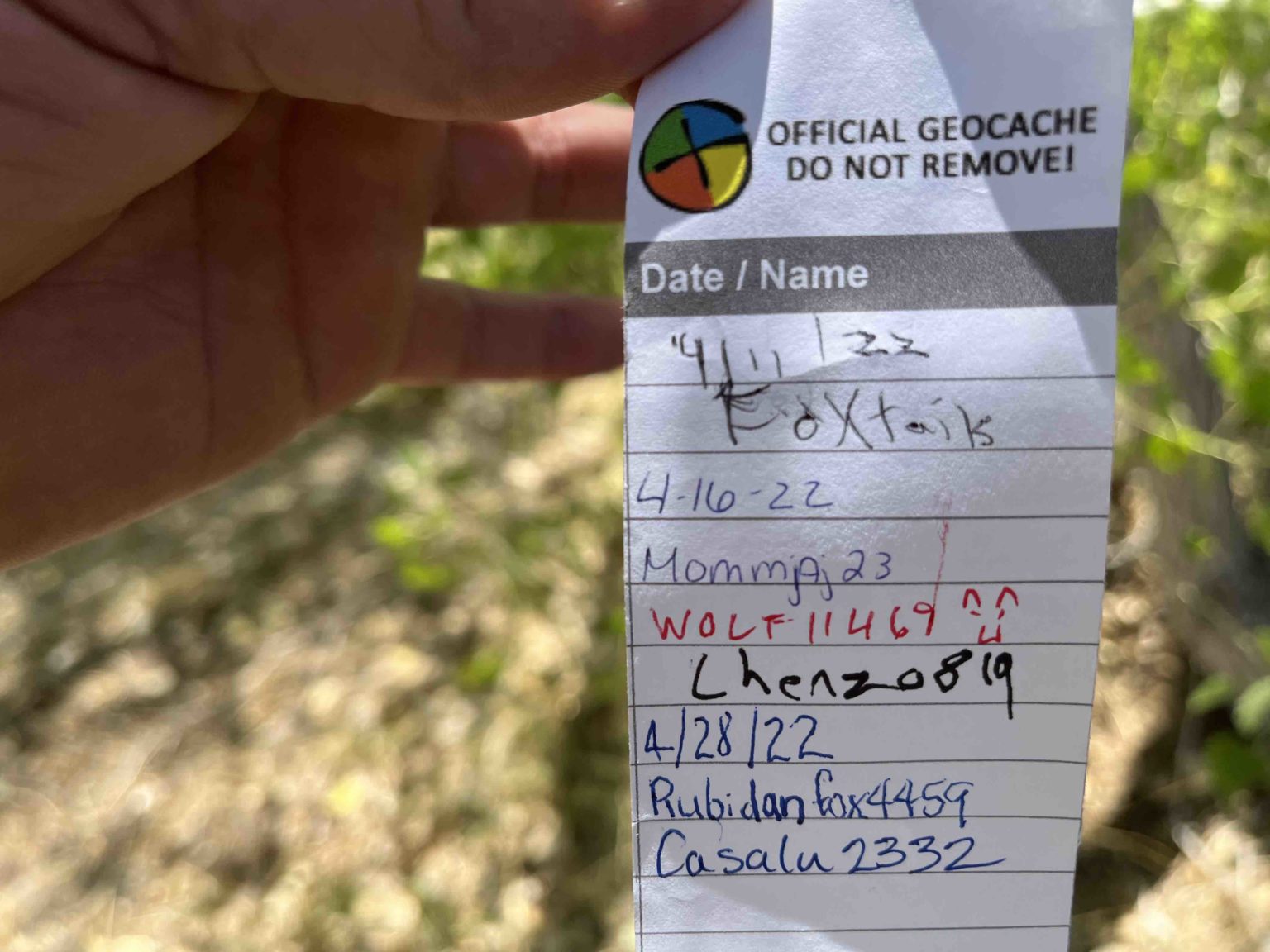Finding geocaches may not be as dangerous as searching for Forest Fenn’s treasure, but there are some risks, as well as plenty of excitement and adventure.
There are dozens of geocaches in the far Northeast Heights, ranging from easy to difficult to pro level. Some have trackables, others encrypted messages and some have nothing at all. Anyone with the geocache coordinates, a map and compass can find the hidden treasures, but a cellphone and the Geocaching app are the most common tools used by cache hunters.
A cache, or geocache, is a location where people hide objects and messages for others to find. When using the Geocaching app, the general locations are about as easy to get to as most places on Google Maps. Once at the general location however, the actual cache becomes more difficult to find. Some are hidden under other objects, while some are just hanging in plain sight. No matter how difficult they are to find, it is the objects inside that make the hunt so exciting — or boring, depending on what’s there.
Heritage Hills Park has multiple geocaches, while there was only one at Rotary Park, according to the Geocache app as of June 2. There are several along Paseo Del Norte Blvd. and other main streets in the northeast part of town, as well as a virtual quiz at North Domingo Baca Park. Not quite augmented reality yet somewhat like Pokémon GO, geocaching takes treasure hunters into a virtual play world of games and fantasy.
As an example of what to expect for first-time geocachers, here’s a description for one location along Paseo Del Norte: “The Coalition of Ordered Governments (COG) has placed this container for Gear soldiers to find. In it contains an encrypted code that could ultimately eradicate the Locust Horde permanently. The container is surrounded in a hot zone and there could be Locust emerging any second. The objective – locate and retrieve the container and extract it to the COG headquarters.”
Close to the COG container are First to Find caches, where the first person to find the cache must then relocate the object or container to a new location for the next person to find. Similarly, some cache spots have trackable items that can be moved from cache spot to cache spot for others to track. No one cache is the same, but most have a logbook for geocachers to sign and date when they find it. Items inside can be anything from a small toy to money, or even a Neighborhood Journal business card!
No matter how different each cache spot, there are rules that apply to all geocachers. If taking an item from the cache spot, that item must be replaced with something of equal or greater value. Geocachers cannot hide or search for items on private property without the owner’s permission, and hiding illegal or dangerous items is strictly prohibited and will be reported. Another rule is to be environmentally friendly – do not trample flowers and bushes looking for cache sites, do not litter at cache sites, and pick up and pack out any trash that is there when possible.
Some cache spots are in public places where transients and other not-so-neighborly people may hang out, so it is wise to always be aware of the surroundings. Empty beer cans, broken bottles and sharp objects can also be found around some cache spots. Adult supervision is always advised for young children, and geocachers should share their location with a responsible individual when treasure hunting, whether going out alone or in a group.
For more information, tips, tricks, rules and safety guidelines, visit geocaching.com or download the Geocaching app on a smartphone.


